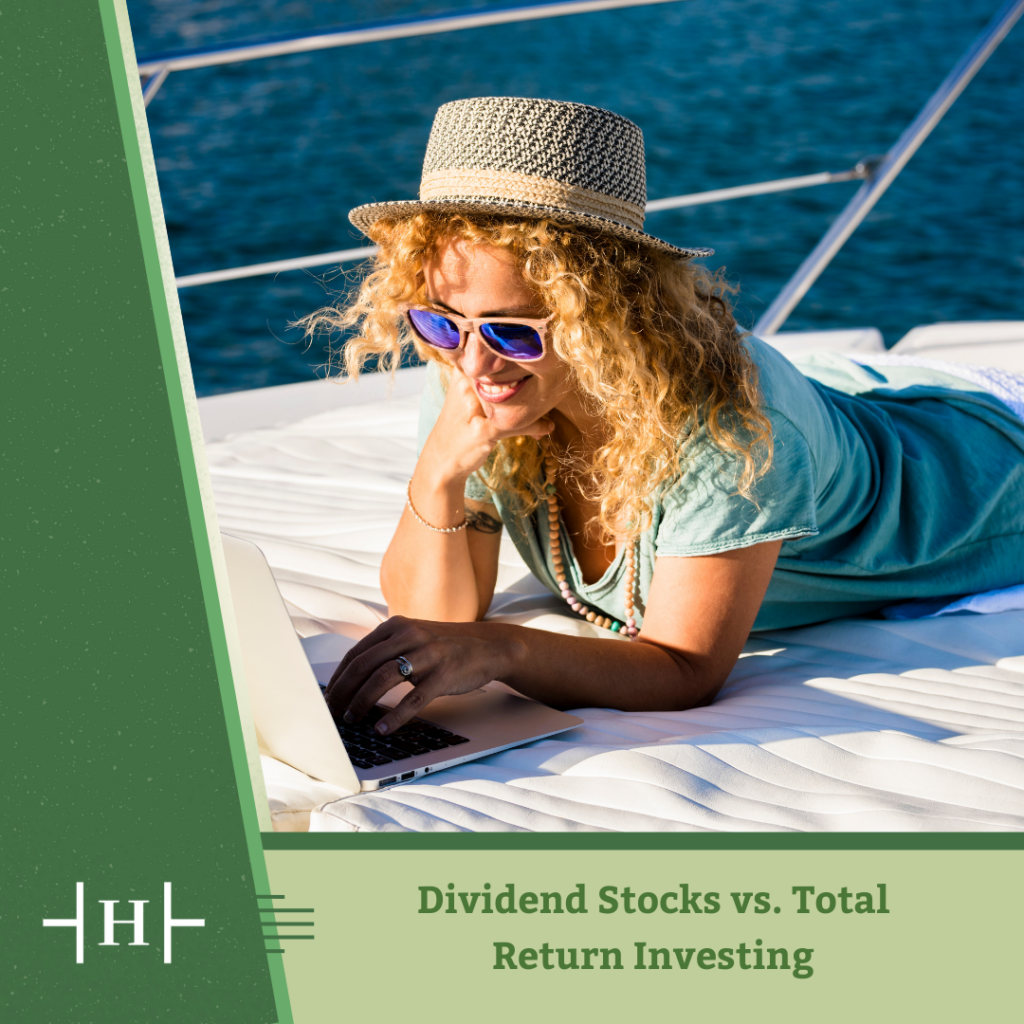July 11, 2023


In Part 1 of “What’s Wrong With Depending on Dividend Stocks?” [hyperlink on Hiley Hunt blog] we described why dividend investing—or, stocking up on stocks with a reputation for consistently paying out attractive dividends—may not be an ideal strategy for generating a dependable income stream out of your investment portfolio.
Today, we’ll look at why we prefer a total return investment strategy instead of seeking more concentrated dividend stock positions, even for retirees who are drawing income out of their portfolios.
Admittedly, there are more dubious ventures than concentrating on dividend stocks. Take, for example, piling your life’s savings into speculative schemes such as cryptocurrency, SPACs, or Jim Cramer’s latest “Mad Money” picks. (Here’s John Oliver’s clip on that, for a laugh.)
But rather than settling on dividend investing, here are two questions for homing in on a better way to build and spend your lifetime wealth:
Where dividend investing falls short on these pivotal counts, total return investing is better structured for directly addressing them, head on.
Bottom line, there are essentially three ways any given investment can reward investors:
Instead of seeking to isolate and maximize dividends as a single solution, total-return investing seeks to make best use of all three of these potential money-making tools as they apply to you, your investment opportunities, and your personal financial goals.
Total return investing offers more flexibility for pursuing overall expected returns within your risk parameters—regardless of where those expected returns come from.
Also, dividend investing limits you to investing in no more than about 40% of all publicly traded stocks. With total return investing, we can consider the entire universe of available stocks.
As we’ll see next, evidence suggests this is an important differentiator.
Total return investing is grounded in decades of academic evidence identifying the stock market’s true sources of expected returns. These include investing in stocks versus bonds to begin with, as well as incorporating return factors such as company size, book value, and profitability.
The research is clear: Whether or not a company pays out dividends is NOT among these identified return factors. We’ve known this since at least the 1960s, when Nobel laureates Merton Miller and Franco Modigliani published their landmark study, “Dividend Policy, Growth, and the Valuation of Shares.” They found, if you omit external factors such as trading costs and taxes, investors should be indifferent to whether companies distribute shareholders’ profits as capital gains or dividends.
In a recent VettaFi Advisor Perspectives piece, Larry Swedroe of Buckingham Wealth Partners revisited this conclusion with his own analysis of four popular dividend-appreciation ETFs. He looked at whether they outperformed their counterparts after accounting for the types of investment factors that drive expected returns. Swedroe concludes:
“Be skeptical of strategies that conflict with economic theory. Even without considering the negative tax implications of a dividend-paying stock … investors are better served by directly targeting factor exposures in their portfolio rather than using a dividend screen, which reduces the investable universe significantly.”
As total return investors, we can still draw from and make best use of available dividends and interest. Because, on a purely rational level, a dollar is a dollar and a return is a return, no matter how it’s paid out.
But whenever it may make more sense to do so, we can also sell positions to generate income. We can also prioritize managing an investment portfolio and income withdrawals as cost- and tax-efficiently as possible, without having to maintain a dividend-stock exposure.
By building from this position of strength, you can pursue the outcomes that make the most sense for you. Would you like to have more income to spend in the end? Experience less market volatility along the way? Create a balance between growth and stability? Total return investing gives you far more ways to mix and match the pieces of your portfolio accordingly. In fact, most total return portfolios still include dividend stocks; they’re just no longer a central pursuit.
[table id=3 /]
By concentrating on dividend stocks, investors are inadvertently investing in a byproduct of the market’s actual sources for expected returns. Why not invest directly in these sources themselves? By focusing on your portfolio’s total return as the horse that drives your proverbial cart, we believe we can best manage expected returns, and best position your portfolio to generate efficient cash flow when the time comes.
If you’d like to know more, please be in touch.